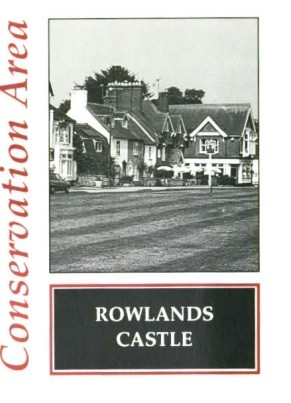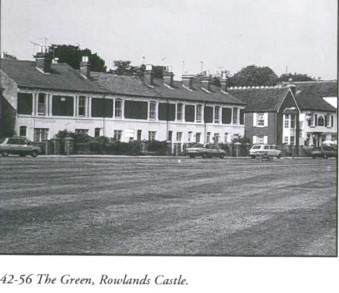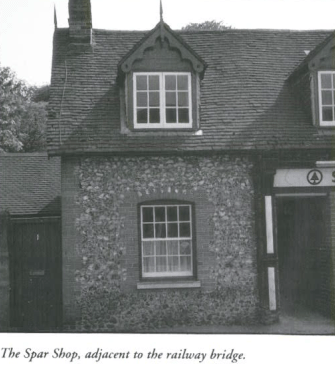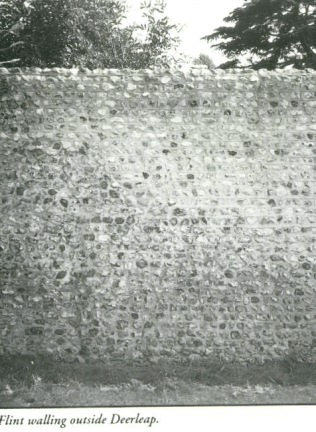Conservation Area
Rowlands Castle was designated as a Conservation Area in December, 1976.

Rowlands Castle dates back to at least the Roman period. Archaeological evidence suggests that sporadic development originally occurred around the present village. The remains of a dense concentration of Romano-British settlement can be found in the area. There is also evidence that a Roman road from Havant may have passed through the village, close to the present railway arches, on its route north to Chalton, Buriton and beyond.
Rowlands Castle was occupied during Saxon and medieval times. The visible remains of a 12th century motte and bailey earth works can be viewed immediately north of the site of the former brickworks. The castle’s tower and battlements are known to have been in good repair in the 12th century, when Henry II spent several days there. The castle is thought to have been in regular use in the 14th century. In the 19th century a report stated that “the remains of Rowlands Castle consists of two masses of wall which are about ten feet thick with a fosse of considerable depth”.

The main historic core of the village centres around the Castle Inn crossroads which are by the railway arches. Here a range of commercial premises and coaching inns was built to serve travellers on the road. In 1859 the Portsmouth-London Railway was opened and a station was built at Rowlands Castle. From this period onwards there has been a great increase in the size of the village. The 19th century development concentrated upon The Green and the roads leading from it.
Character of the Conservation Area
Rowlands Castle Conservation Area focuses on The Green, a large triangular grass area which is fronted on two sides by buildings. On the South side the high flint wall of Deerleap, a substantial house within sizeable grounds, plays an important part in creating the character of the Conservation Area.

The grounds of Dearleap are a basic landscape component to the village and form a firm rural edge to its southern side, as well as a separation from neighbouring settlements, and a contrast to the built form encircling The Green.

The buildings fronting onto the Green are mainly 19th century – groups of stylised terraces, densely built next to one another and with small brick boundary walls. None of these buildings is listed as being of special architectural or historic interest but the overall effect is to create an attractive historic village centre.
The brick railway arches at the north eastern end of the Green form an important strong visual stop, as does the obliquely positioned 19th century Congregational Church at the south western end of The Green.
To the east of the railway arches is an almost entirely different world, a transition from the activity of The Green to the quietness of Stansted Park and woods. with the flint wall cottages emphasizing the rural quality of this part of the village. Part of the area was transferred to West Sussex in April 1992.
Buildings

The only listed buildings in the Conservation Area are beyond the railway arch and include:-
The Castle Inn an early 19th century brick and tiled building, with attractive eaves and stepped fascia.
No 3 Finchdean Road an 18th century cottage with red brick and blue headers, and flush red brick dressings.

Deerleap on the southern side of the Green is an unlisted 19th century building set in extensive grounds which contains the remains of the 12th century castle and a range of mature trees. The high flint walls fronting onto the Green screen the house and its grounds from public view.
The Congregational Chapel was built in 1881. It has a prominent pointed tower and is built in brick.
Materials and Other Building Detail
Many of the buildings remain virtually unaltered and display many of their original architectural features. Walls are mainly of brick and/or flint; some of which have been painted and/or rendered. The roofs are mainly of slate or tile and generally have shallow pitches. The occasional gable end interrupts the plain frontage elevation along the north side of the Green.
Windows are mainly sliding sash or casement and there are elegant simple wooden doors on many of the houses.
New Development
The character of Rowlands Castle Conservation Area is created by the strong combination of the 19th century homes which front onto the large open Green and the high flint walls of Deerleap. When taken together these features create an .attractive scene: even minor alterations could spoil it.
The design of new buildings, extensions and alterations to existing buildings and new uses within the Conservation Area will all affect its character. The design of development will need to respect the details, overall form and materials used within the Conservation Area. Those who under take development should do so with care.
Further advice is given in the following leaflets, which are published by East Hampshire District Council as part of the Conservation Directory:-
- East l Hampshire Conservation Area
- Caring for East Hampshire’s Conservation Areas and Historic Buildings
Further Reading
- The Buildings of England: Hampshire and the Isle of Wight. N. Pevsner and D. Lloyd, 1985, (Penguin Books)
- The Victorian County Histories
- Hampshire Treasures, Hampshire County Council. 198″
For further information contact:
The Conservation Officer, Heritage Team, East Hampshire District Council, Penns Place, Petersfield GU31 4EX. 01730 234214
Courtesy of East Hampshire District Council